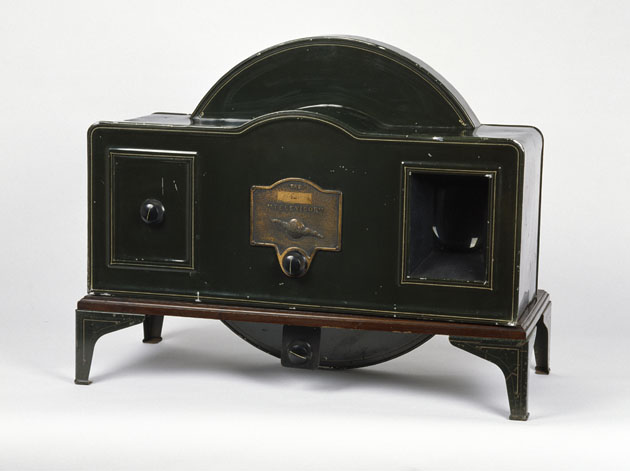Details
- Object type
television; televisor
- Title
televisor receiving set disc model
- Artist/Maker
Baird, John Logie inventor
Plessey Company maker
- Date
circa 1932
- Description
-
This Baird Televisor from around 1930–2 is an example of the first commercially available television. The Baird Televisor Disc Model consists of four essential parts: a scanning disc, a driving motor, an automatic synchronising gear and a neon lamp. The television channels could be tuned in, in the same way that a radio was tuned.
The Baird motor was designed to be universal and run at 750 r.p.m on a variety of supply mains – either DC or 50 cycle AC. A motor suitable for running from a 6 volt accumulator was also available.
The neon lamp is of the flat plate type and was designed especially for the Baird Televisor. The striking voltage was about 200 volts.
The text from a contemporary Baird Televisor advertisement reads:
‘During the past quarter of a century Science has advanced in very rapid strides. We have seen the cinematograph, the aeroplane, wireless telegraphy, and broadcasting come to perfection. In the latter part of the last century such developments were only dreamed of by writers of fiction; now we see them as accomplished facts.
The march of science continues, however, and to-day the Baird Company presents to the public the very latest marvel – Television – the science of seeing by wire and wireless. It is an amazing thing, but nonetheless true, that a person sitting before the Baird transmitter can be seen thousands of miles away. Not a photograph, nor yet a shadowgraph, but an actual moving image of the subject being televised can be seen and heard in any home fitted with the Baird ‘Televisor’ receiving apparatus.’
The Disc Model sold for roughly £18-18-0 each. Baird Televisors were also available to buy as a kit.
- ID Number
T.1936.81
- Location
In storage
